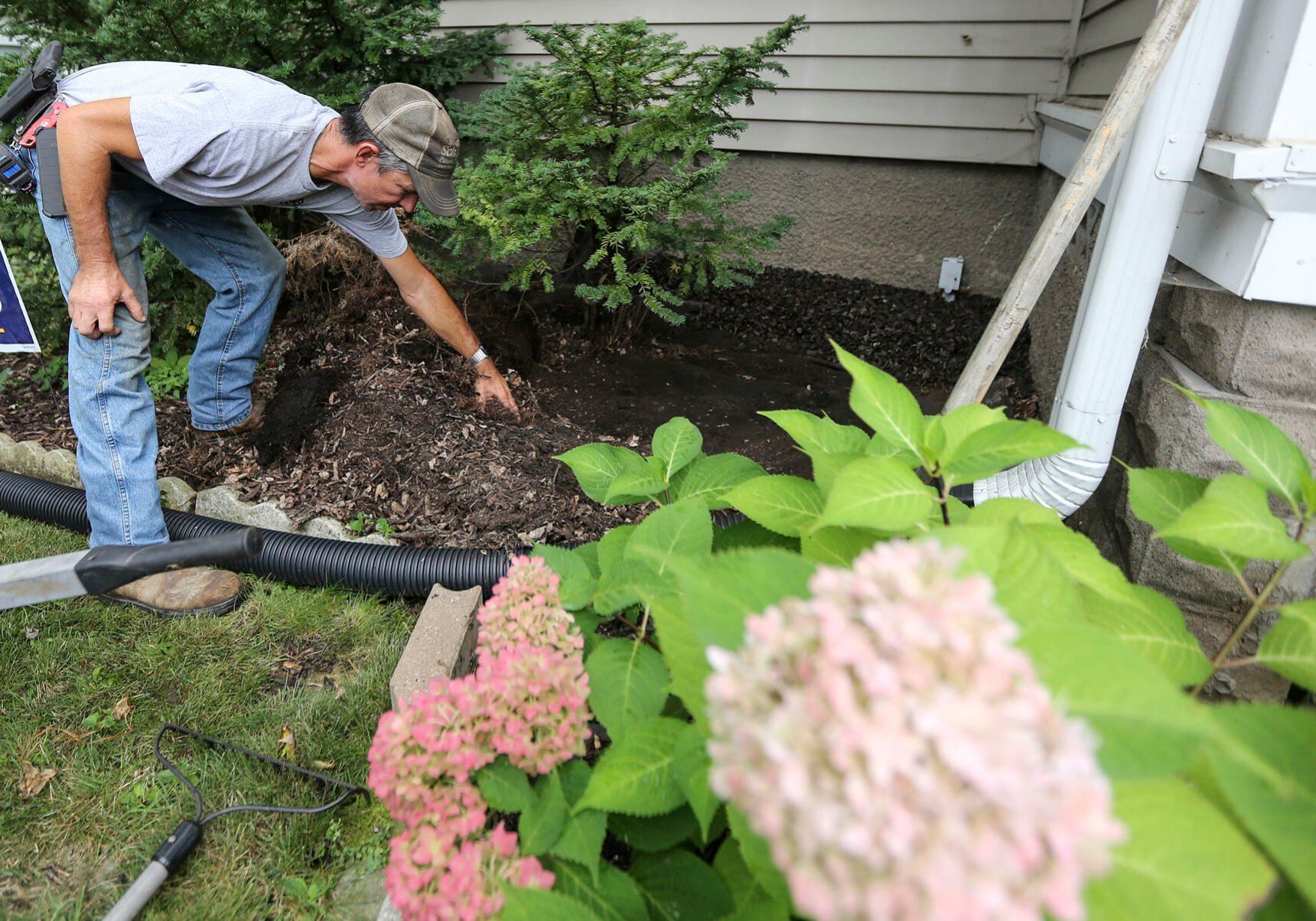EPWORTH, Iowa — Chuck Schueller had what should have been a plum gig for the Epworth handyman — removing wood mulch from a residential yard and replacing it with fresh rubber mulch.
At $3,000 to $5,000 for the contract, it was one of his better-paying jobs.
There was only one problem. The job was in Bloomington, Wis., more than an hour away, and diesel costs sat at $4.89 per gallon in the Midwest on Monday, according to the U.S Energy Information Administration.
“That’s going to take quite a bit with these fuel prices,” Schueller said.
Heightened transportation costs and slow wage growth are among the principal factors that have bled rural Americans’ incomes, according to a new report from Iowa State University that suggests the past two years of inflation have disproportionately affected households in rural areas.
The report defined rural households as people living in open country or towns with populations smaller than 2,500 people, a definition that includes many tri-state-area communities.
The biggest inflationary impact for rural households came from transportation costs, according to report author and sociology professor David Peters. With longer drive times for work, school or shopping and a lack of alternatives compared to urban areas, rural households pay $2,470 more for gasoline and diesel fuels than they did two years ago.
“These aren’t things that a rural family can easily scale back,” Peters said. “You drive to work. You drive to get groceries.”
Karla Strang, who runs Grace’s Place diner in Cascade, felt the pressure of high gas prices from her waitstaff, who commute from Dubuque, Epworth and Anamosa.
Ultimately, she said, she doubled pay from the minimum wage after losing several servers and out of concern she would lose more.
“There’s a lot of them that make the trip,” Strang said. “None of them really complained. They just said they would have to find something closer.”
Her decision to raise wages to that degree was apparently an exception. While expenses jumped 18.5% for rural households from June 2020 to June 2022, earnings grew by only 6.1%, according to the study.
The largest gulf between urban and rural households was inflationary costs for used cars and trucks, which have grown for all Americans amid supply chain shortages but cost on average about $500 more per household for rural Americans than urban dwellers. Peters attributed this to there being fewer used car dealerships in rural areas.
Michelle Kuster, a hairstylist who runs Hometown Hair Studio in Cuba City, Wis., said she found used-car dealers unwilling to negotiate when she was looking to buy a car several months ago. Fuel-efficient vehicles, she noted, were impossible to find.
For Peters, the most drastic impact inflation has had on rural Americans came with their discretionary income — money left over after covering regular expenses such as groceries, rent and gas. From June 2020 to June 2022, discretionary income for rural households decreased by 49.1%.
“Really the striking thing when I finished running the numbers is, the discretionary income had been cut in half,” Peters said.
Conversely, urban households’ discretionary income fell by 13.1% in the same period, and those households had higher take-home pay and discretionary incomes to begin with.
Regular expenses now consume 91% of take-home pay for rural households, the report estimated.
“People are just laying low,” said Linda Hoffmann, who works at Cascade’s Amoco station. “Gas prices are hurting people. Grocery prices are hurting people.”
Even the smallest indulgences have become less affordable. A Hershey bar now retails for $2 at the Amoco, she said, after vendors raised prices on candy bars.
Brandi Drexler, a corrections officer from Cascade who stopped in at the gas station, agreed that even leisure activities came with new costs. The concession stand at the public pool where her son likes to hang out had raised prices, she said, and his fishing equipment cost more, too.
The whole family’s leisure time seemed to have taken a hit, in fact.
“We cut back a lot on when we go out, what we do,” Drexler said. “Or we don’t go very far.”
That extended to family gatherings. Drexler’s family lives in St. Louis, but she hasn’t made the trip to see her relatives since last Christmas. She cited high gas prices as the main factor.
Ron Brisbois, executive director of Grant County (Wis.) Economic Development Corp., said residents of the county often seem to have a harder time handling inflation.
“Inflation seems to hit us a little bit harder in the rural areas,” he said.
In addition to gas prices, he cited a tight housing market and higher food prices among the pressures on locals.
Peters expressed a similar sentiment. With lower incomes in general, rural Americans had less of a cushion against upheaval in the economy or even day-to-day life — now more than ever.
““One thing goes wrong — your car or air-conditioning goes down, you need to have a home repair or a medical emergency — there’s a real risk of rural default and debt,” Peters said.



